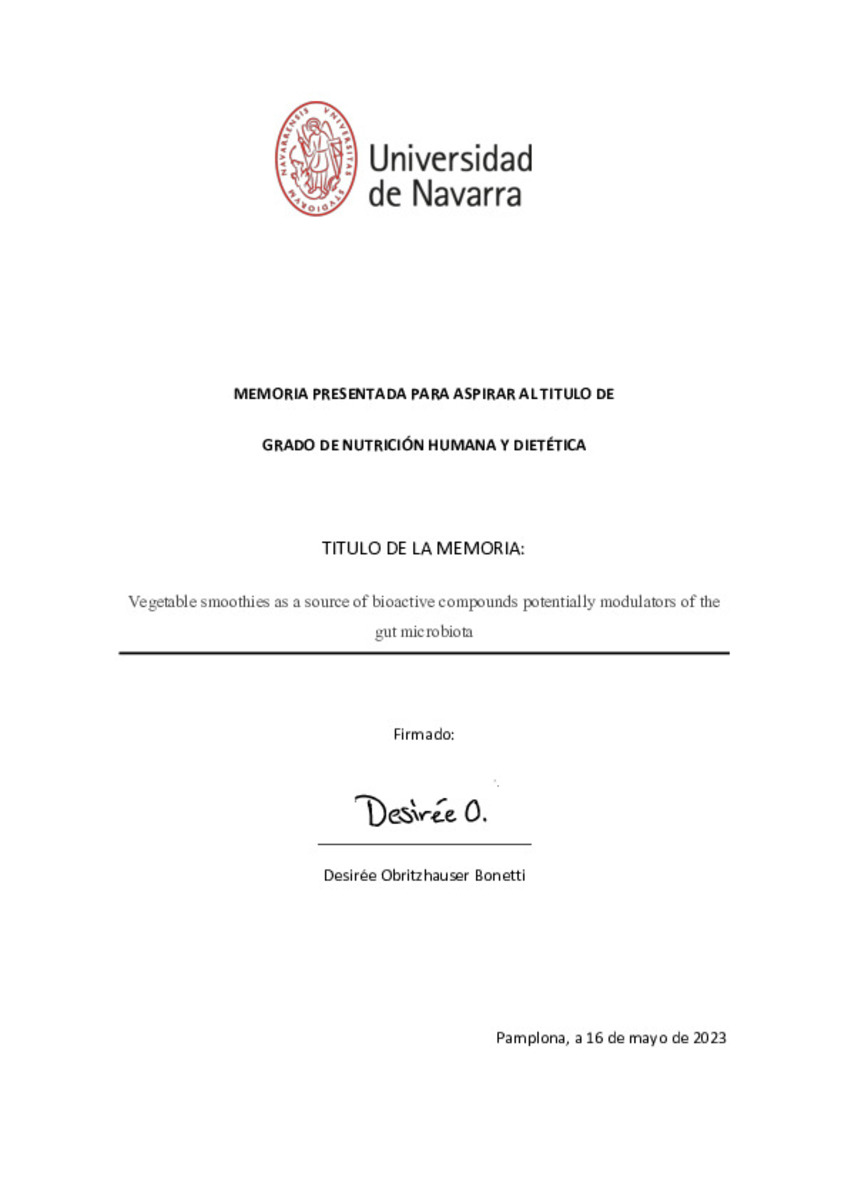Vegetable smoothies as a source of bioactive compounds potentially modulators of the gut microbiota
Files in This Item:
Statistics and impact
Items in Dadun are protected by copyright, with all rights reserved, unless otherwise indicated.







